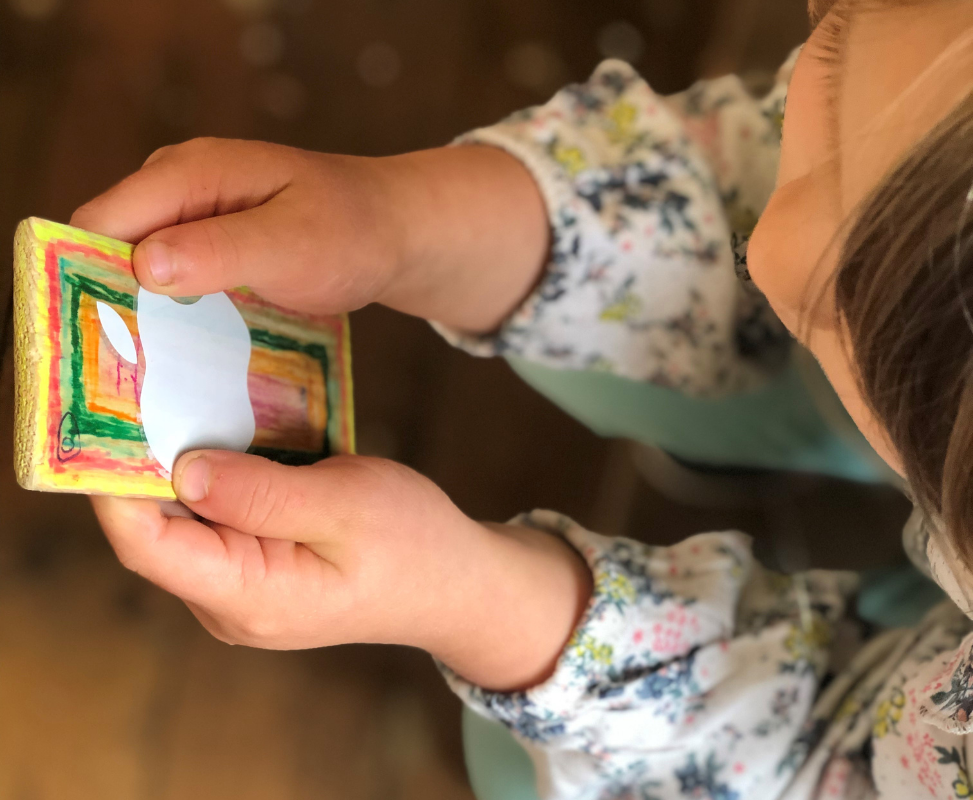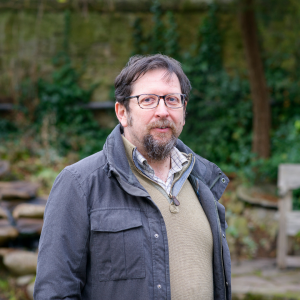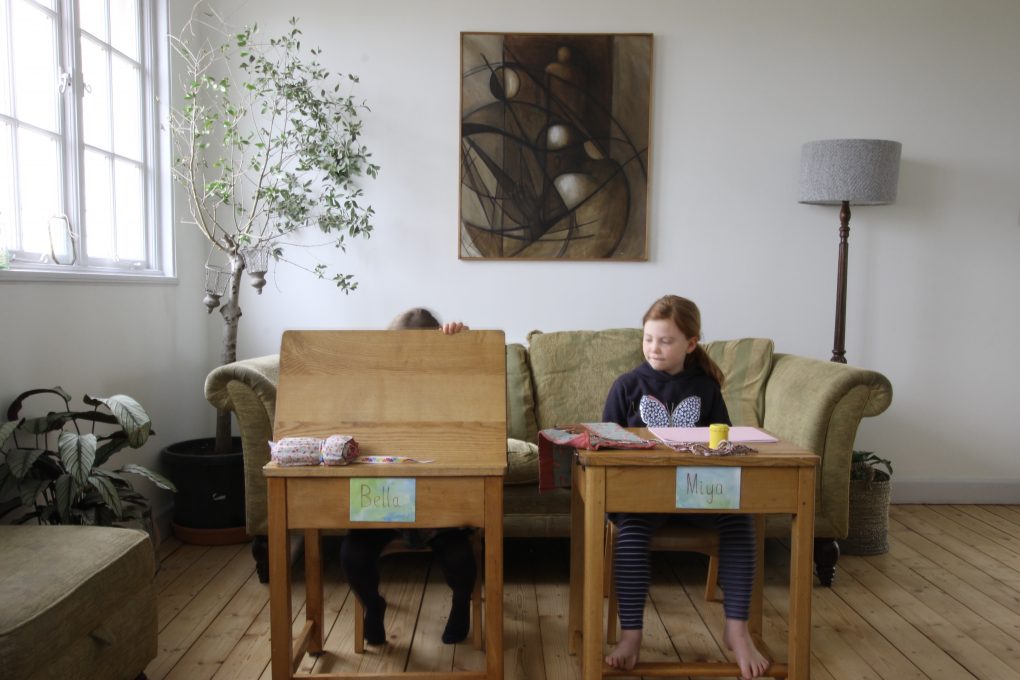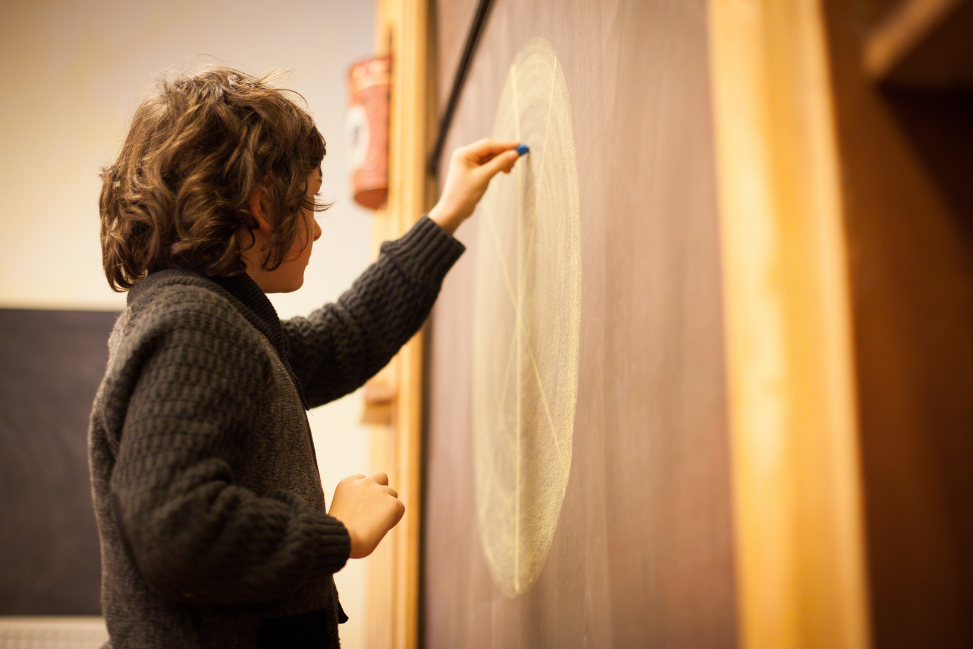Minding the Gap – one Steiner Waldorf Teacher’s perspective on the “Digital Divide”
April 30 2021


Teacher, Bruce Houldsworth, has spent 16 years at the chalkface in a school that considers screens incompatible with the holistic education it strives to offer.
The Scottish National Party has recently pledged, subject to successfully retaining a parliamentary majority, to gift an age-appropriate laptop, Chromebook or tablet for each Scottish school child from P1 to S6. COVID-19 has thrown into sharp relief the disadvantages experienced by some children; poor access to technology forming a barrier to learning at home during – now – two lockdowns. The devices are now “basic building blocks of a good education”, in the words of John Swinney; overcoming this barrier would allow more children to complete their homework and study online.
I’ve accompanied my class of 8- and 9-year-olds through an almost unprecedented disruption to their education (only the relocating of the entire school to the Borders during World War II comes close), yet – from my unorthodox little corner of Scottish Education – I find myself pondering the wisdom and effectiveness of the proposed £300 million programme. This goes beyond Steiner Education’s philosophical resistance to screen use in younger children. It’s a bold pledge, founded on a laudable intention, a fine headline, and yet is it really a solution to the problem of the effect of deprivation on educational outcomes?

Sisters at Edinburgh Steiner School turn living room into temporary classroom during lockdown, bringing their desks home.
As a Class Teacher in a Steiner School, I have the opportunity to work with a single cohort of children for eight years, to get to know them deeply, to watch them grow and develop. The children experience a single teacher/mentor from age 7 to 14, bridging both primary and the start of secondary school. But I have to acknowledge that even for my class of relatively well-off children, lockdown was hard. We all had to learn how to do school differently. I tore up the timetable and worked from first principles to establish a new way of working with the children. Some things worked well, some worked less so, some aspects – like one-to-one support for individual children – were actually easier than in ‘normal school’. We all learned.
I instigated the purchase of a set of Chromebooks that could be lent out where children needed to use them. I learned to appreciate a solid broadband connection, a fast laptop, GSuite, Doodle, Zoom and many other new tools. I am profoundly grateful that we had this level of technology available to us. This is the first pandemic that has been so well supported by technology. For my class, the time was not lost, much was learned, and I might reflect overall that it was alright, in a sort of a limited way. Coming back to school, it was clear to see how much they needed and loved outside undirected play with each other.
Yet I need to go deeper into the process of education during lockdown to draw out a key presence in the process. Every morning there was a “morning candle” video call, at which we learned songs, rhymes and practices skills such as times tables. The parents then delivered my lesson plan for a 2 hour Main Lesson. There were subject lessons in English, maths and drawing. Colleagues provided modern foreign languages. Although there were some recorded video and audio lessons from me, much relied on parents.
A social constructivist might say that pupil, parent and teacher formed a triad, rather than the classroom dyad of pupil and parent. My profound gratitude and respect goes out to the parents of my class who managed to fit supporting their child’s education into days already crammed with work, siblings, what ‘normal life’ was possible. My best laid plans would have come to nothing without parental investment in the process, their empowerment to contribute and above all piles of time and effort.
In our school, we work with the idea of a Main Lesson, a multi-modal and topic-based exploration of one subject for 3-4 weeks, for two hours each morning. This year, we’ve had house building, where we’ve looked at how foundations work and how bricks can be bonded in different patterns: Flemish bond, stretcher bond, English bond. A missing brick in the wall clearly affects the whole edifice and poor foundations can make the building unstable. We’ve also finished a block on farming. We learnt how wheat and barley grow, and how the farmer’s year worked. The children loved watching bean and pea seed germinating in jars and drawing them.
These two Main Lessons were chosen to illustrate educational philosophies. I liken mainstream teaching to building a wall. Gaps must be filled as soon as they are identified. The tools and process of building start at the base and remains largely unchanged as the wall gets bigger. However, no-one would argue that a bean seed is not from the bean plant, yet at the same time we don’t expect a seed to be a leaf, or a leaf to bear fruit. Here’s a picture of child development in Steiner Schools.
The needs of the seed are different to the needs of leaves and shoots. If intellect is the fruit of the maturing child, then the seed embodies the potential to bear fruit… if treated well. The plant that is struggling needs extra care and time. All those involved in children’s lives must allow our approach to children to change as they grow up, from the material, to the expectations, to the media used.
Above all, children have plasticity, and can learn the same thing in different ways at different ages. In normal times, our school advises parents to eliminate or strongly restrict screen time. We empower parents to resist calls for immersion in the digital world. Many Steiner and other authors have written with alarm on statistics of children’s diets of screen time, and its adverse effects on child development. Even Silicon Valley glitterati are drawn to Steiner schools.

Steiner Waldorf schools favour blackboards over iPads in the younger years. 75% of parents at sister Steiner school in Silicon Valley work in tech.
To wheel out a few quotes: Einstein wrote “It is the supreme art of the teacher to awaken joy in creative expression and knowledge.” Picasso wrote “Computers are useless. They can only give you answers” in 1968 but the educational value of the right question remains critical. We live in an age of easy access to information, yet integrating this information into a coherent world view is much harder. This needs an artist, rather than the most gifted of librarians.
Visual media bring preformed pictures, within which imagination declines. Facts and information stifle narrative. Easy wins are rapid gratification rather than a steady striving to improve. Even Tim Berners-Lee’s vision that the web should not just connect machines but connect people is fading given poor use of the technology: human connection
on the web “is functioning in a dystopian way” (Guardian).
It’s no surprise to me, therefore, that the most loved and successful aspects of lockdown school were the morning candle and the one-to-one support sessions: the most ‘human’, the most social, those moments when it was briefly possible to almost forget the technological mediator. The strand that was easiest to maintain was the academic, particularly numeracy and literacy. The hardest was social and emotional learning and development.
My perspective on the SNP pledge is informed by this experience over two periods of lockdown, by my serving on my School’s Digital Literacy Group, by sixteen years as a Class Teacher and my recent Post Graduate Diploma with the University of Highlands and Islands. I am, I confess, only peripherally aware of the scale of child poverty (25% of Scottish Children living in relative poverty (Gov.scot)). Parents of my class make significant personal and financial sacrifices to enable their children’s education, but they are lucky not to have to choose ‘heat or eat’, or to struggle to feed their children during holidays.
The SNP’s well-intentioned pledge might be superficially attractive, holding up the panacea of investment in technology. Beyond my school’s philosophic and pedagogical reservations, here are more deficiencies for primary age children:
- P1-P3 children find it harder to engage with online learning, as acknowledged by this groups early return to school after the second lockdown.
- Digital homework takes them away from the chance to play with real people, with children’s social development having also been hindered by lockdown. The measure ignores social, emotional, sporting and artistic needs Could not the money be better spent supporting social initiatives, sports clubs and social clubs. The Youth in Iceland programme (The Atlantic) shows the multiplicity of benefits that can result from actively addressing the wider needs of children and young people.
- The digital divide is but one of the faces of poverty. My experience of lockdown showed many links in a chain are needed for successful lockdown learning. Providing devices to all may help if the technology was the only gap, but will be useless with parental disengagement in education, parental disempowerment or in the face of the many reasons why they might not be able to make time to properly support their child. An effective structure to close the gap must include outreach workers – new staff in education or social cape – to work with disadvantaged pupils on video calls or, better, in person, or directly to support parents to support their children. An investment in adult education would help position schools as a place of life-long education.
- The proposal would benefit all pupils in state education. Why should not the investment be targeted at the 25% in poverty, or towards areas identified by the Scottish Index of Multiple Deprivation?
- Younger children lack the natural discernment to ensure online safety. State provision of equipment to all pupils would therefore expose some pupils to risk. These risks could be reduced but not eliminated by an Online Safety curriculum that extends down to the first years of primary.
- Teachers are already working flat out, but the technology needs effective resourcing to work effectively, and safely. This must not fall on the workloads of existing teachers. I’d welcome a larger, more nuanced, targeted, broad investment in disadvantaged Scottish children. The data show a crying need. Free laptops for my class? No, thank you.
Perhaps of interest:
Media & Technology Philosophy
Digital Literacy Group
Class 12’s Around The World In 80 Days radio play broadcast by BBC
An alternative educational passport navigates remote territory
